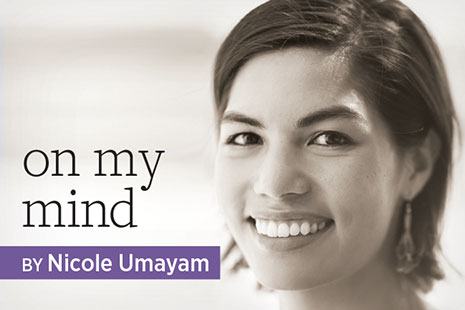
Functionally, access involves the preservation, management, and discoverability of records. But information professionals know that access does not necessarily mean accessibility.
For community-based or other participatory archive models, digital technologies offer a way to meaningfully engage with materials. Yet what good is a digital archive if the community does not have internet available? How can an individual fully participate in using or shaping digital heritage resources if they do not have the computer skills, or even the computers? If the end goal of accessibility is to support community-facing, culturally responsive, and diverse collections, we must first address digital inequity.
Many of the tribal libraries that I visit in Arizona serve as “culture keepers” of language and records. This role is crucial, as most of the 194 indigenous languages in North America today, including many in the Southwest, are categorized as severely or critically endangered. There is urgent need for a community-wide, multipronged approach to language revitalization—including linguistic documentation, language learning, expanding domains of use, and increasing access through archiving and dissemination—and resources must be made accessible for a wide variety of user types and outputs.
The abundance of digital technologies makes this an exciting time for user-centered and participatory action. In the endangered language context, collections are not merely materials but spaces for cultural reclamation through engagement with the records. For languages to endure in today’s increasingly online world, they must exist digitally, and preservation and access are critical first steps. But to create a space where all stakeholders can participate, libraries must take a comprehensive approach to digital inclusion. This means access to robust broadband service, internet-capable devices, and digital literacy skills.
Collections are not merely materials but spaces for cultural reclamation through engagement with the records.
A few years ago I worked as a consultant for a tribe that was starting a digital community language archive. With accessibility as a priority, we collaborated on a metadata schema that would meet the informational needs of users. I was taken aback, however, when I realized that many of the elders were not comfortable using spreadsheets because of limited experience with computers. I didn’t realize that we needed to start by making sure individuals had the skills necessary to enter and review data. Engagement in language revitalization can look like a lot of things, and to achieve accessibility we need to think through the skills development trajectories necessary to do the work—such as how to use a flatbed scanner, post a video of a conversation between two speakers to YouTube, or make language data machine readable.
The same tribal populations facing rapid language loss are disproportionately affected by the broadband divide. About 10% of Americans lack access to the FCC’s service standard of 25 Mbps/3 Mbps, and this disparity increases to 41% for those living on tribal lands. Tribal libraries often pick up the slack in providing broadband access for the community, but they are less equipped than mainstream public libraries to deliver quality internet service. National efforts to remove barriers and increase E-Rate participation for tribal schools and libraries, such as the Tribal Connect Act, are a welcome start.
It’s no surprise that resource and financial capacity are major stressors for tribal libraries, and many librarians on the ground face the same barriers as their patrons, such as limited technical skills. If libraries are to be the spaces for digital preservation and community-based language work, we need strategic solutions to increase both the literal and figurative bandwidth needed for true digital inclusion.


